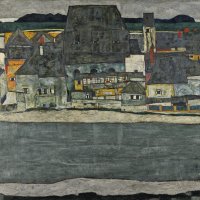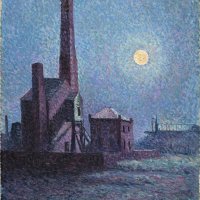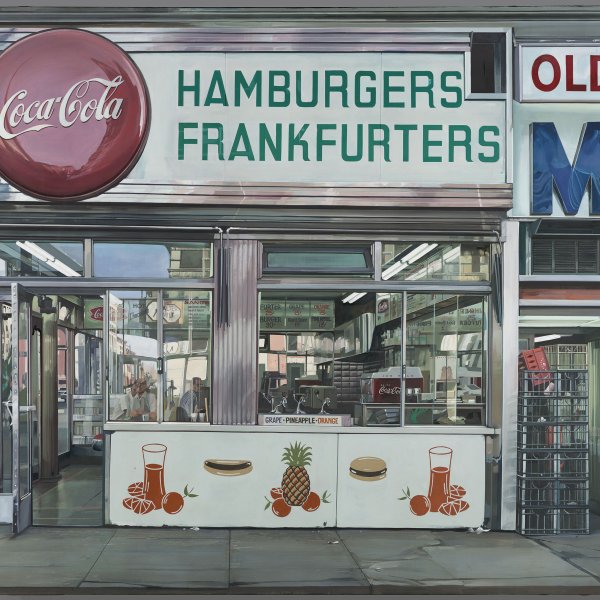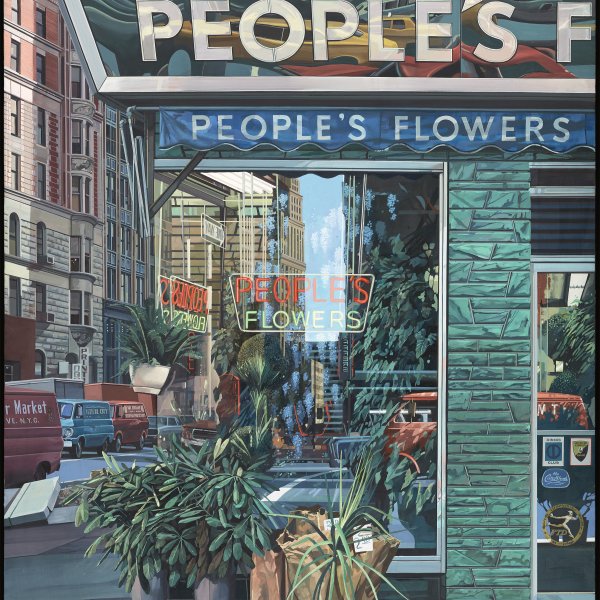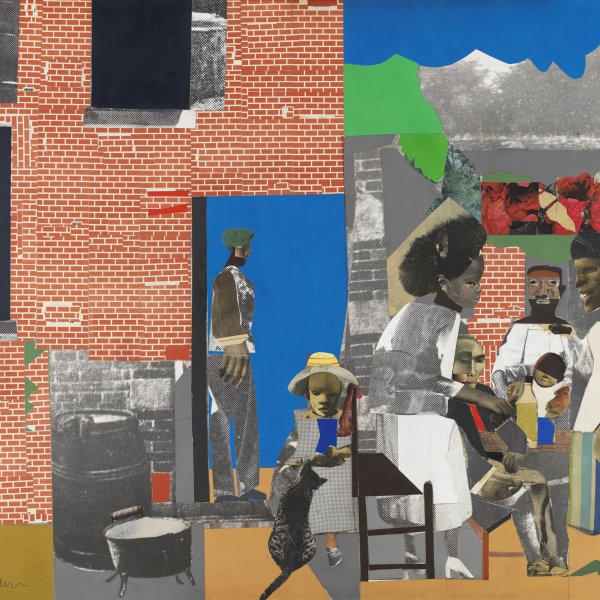Telephone Booths
Richard Estes is held to be one of the foremost practitioners of American Photorealism. Most of his paintings portray urban landscapes and specific details of life in big cities, particularly New York, as with the present Telephone Booths executed in 1967. The starting point for the composition was several photographs he took of a row of telephone booths located at the intersection of Broadway, Sixth Avenue and 34th Street, which the artist combined and transformed into a pictorial motif. The complexity of the image is typical of Estes’ realism — a realism that might be linked to the tradition of trompe l’oeil painting on account of its intention to confound and perplex the viewer. Although the scene depicted is recognisable, the complexity of the optical angle and the jumble of reflections require an additional effort of concentration, as nothing can be registered at first sight. As in most of his paintings, Estes explores the ability of glass to mislead, as it can both be transparent and reflect at the same time, a fact which further heightens its bewildering effect. In the present painting the mass of reflections — some clearly defined (on the glass) and others distorted (on the metal surfaces) — allow us to view simultaneously the scene in front of us and the buildings behind us; indeed, the signs of the department stores Macy’s and Woolworth can be made out.
Although Estes’ cities are generally deserted, the Telephone Booths are occupied, making this a rare example of a work that features human figures. Enclosed in each of the booths is a person with their back to the viewer. Sandro Parmiggiani describes them as “metaphors of chopped voices, and of faceless people, who stay unknown inside those impenetrable spaces, to which hint, like a visible rhyme, the patches bordering their metal edges and increasing the mystery and visual dizziness.”
The writer John Updike, who devoted a delightful text to this work, made the following reflection: “We know nothing of the two people on the right but their light clothes. Of the pair on the left we know even less; they appear transparent in the swim of reflections. By the etiquette of metropolitan crowding their persons have been reduced to mere signifiers that the booths are taken; like computer bytes or slugs of type, they fill their slots and give the information. The bleakness of this information contrasted with the richness or the visual information the painter has unstintingly imparted, makes for an utterly tender artistic irony.”
Paloma Alarcó
Emotions through art
This artwork is part of a study we conducted to analyze people's emotional responses when observing 125 pieces from the museum.

